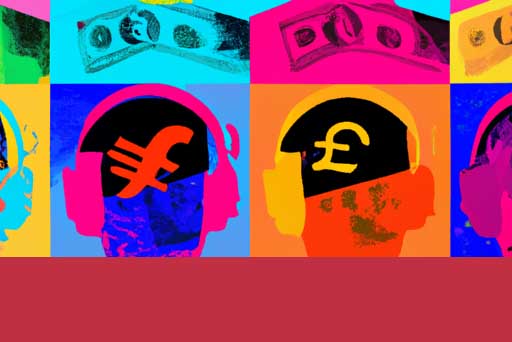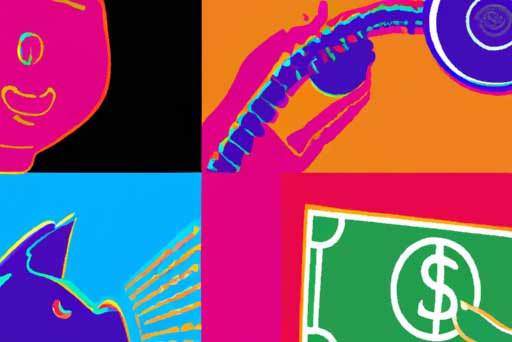Building a successful business is no small feat. You pour your heart and soul into it – serving customers, innovating, and slowly seeing those sales and profits rise. But in the back of your mind, you can’t help but wonder – what if someone tries to take advantage of all my hard work?
The unfortunate reality is that fraudsters are everywhere these days, looking for any weakness to exploit – and both large and small businesses are in the crossfires. In fact, according to PwC’s 2022 survey, over half of companies experienced fraud in the past two years, the highest in 20 years of research. From cyber-attacks to wire fraud to dishonest employees, there’s no shortage of threats that aim to profit off your hard work. And catching these schemers is tough. It often requires teams of fraud experts and the latest technology just to have a chance. But to survive and thrive, it’s more crucial than ever to put up your guard.
So, in this guide, we’ll explore five key fraud prevention solutions that businesses are using to ward off attacks and reinforce their defenses against the relentless creativity of fraudsters lurking in wait.
Anomaly Detection Using AI and Machine Learning
Trying to manually catch fraud is like searching for a needle in a haystack – almost impossible for overworked human teams. Thankfully, we can augment our fraud fighters with artificial intelligence guard dogs that never sleep on the job. These AI systems tap into huge volumes of payment, login, and activity data to learn what “normal” looks like across customers. Their adaptive algorithms account for new trends and changes over time to avoid getting tricked. Armed with the baseline, AI sentries constantly patrol networks and account for anything fishy – weird transfers, suspicious logins, and activity spikes. They use advanced pattern spotting and predictive powers humans can only dream of to surface risky anomalies fraud agents should investigate. So even if scammers dream up some elaborate new scheme, AI fraud patrol stays vigilant, ready to sniff it out and chase the crooks down. The artificial guards alert human counterparts to emerging dangers so we can outsmart the tricksters targeting our data and dollars. With an unfatiguing, adaptable digital watchdog keeping a close watch, fraudsters don’t stand a chance no matter what new tricks they try.
Continuous Authentication Through Biometrics
Where AI provides the behavioral analysis to sniff out fraud, biometrics technology delivers the identification confirmation required to stop it. Fingerprint and facial recognition, retinal scanning, voice verification – these biological analyses are very difficult for perpetrators to circumvent with false identities or impersonation. By tying access rights and account privileges directly to individually unique human attributes, biometrics makes stealing credentials or performing illicit transactions under pretenses extremely arduous. Would-be fraudsters can create fake IPs and phishing sites, but their voices, faces, eyes, and fingertips will never copy genuine users’ biological blueprints. Advanced solutions even monitor for suspicious variations in authentication patterns, adding layers of continuous user verification needed to shut down modern fraud ploys in their tracks.
Ethical Hacking: Unleashing the White Hat Hackers
If the business leader truly wants to future-proof their defenses, they may need to bring in some extra firepower in the form of ethical hackers. Acting as allies in the fight, these cybersecurity experts test systems and networks for vulnerabilities that fraudsters could exploit, before the criminals get a chance. Armed with extensive knowledge of common exploits and attack vectors, ethical hackers play offense to reveal security holes and weaknesses. Through controlled penetration testing, social engineering evaluations, and red team exercises, they exploit flaws with permission to show where fraud prevention measures are lacking. These white hat hackers think like the enemy, revealing openings so they can be reinforced. By incorporating ethical hacking assessments into standard risk management practices, companies stay continually up-to-date on where fraud prevention blindspots exist. When new threats arise or cyber defenses become outdated, ethical hackers make sure protection strategies don’t lag behind the endless schemes of swindlers. They provide both sword and shield for our heroes in their never-ending quest to banish fraud.
AI-Powered Threat Intelligence
On the frontlines, fraud analysts struggle to detect real dangers amidst floods of data. The key is transforming raw information into threat intelligence – insights that reveal imminent attacks. Through aggregating external cyber crime sources with internal transaction and network statistics, next-gen systems digest reams of data into intelligence reports. Curated dashboards showcase emerging fraud trends, compromised credentials circulating dark web markets, and technical tactics gaining popularity amongst hackers. Advanced machine learning models process the aggregated intelligence to uncover anomalies indicative of budding schemes. They spotlight unseen connections that reveal frauds hiding within massive volumes. All while keeping findings tailored to the company’s vertical, technologies, and business flows most vulnerable. This enriched intelligence allows analysts to operate proactively, armed with the trends and tendencies of fraudsters targeting their sectors. No more sifting blindly through haystacks. Defenders gain targeted insights revealing where to best focus protections against schemes being actively assembled. And key warnings ensure new attack developments don’t catch teams off guard.
Deception Technology
You know that feeling when you just sense someone’s up to no good, but you can’t quite catch them red-handed? Well, that’s why more businesses are fighting fire with fire by planting boobytraps for lurking fraudsters. The idea is to hide fake customer records, wallet addresses, and other tempting targets around your systems – like undercover bait cars. When scammers take the bait and try accessing the fakes thinking they’ve hit the jackpot, alarms blaze to reveal the unfolding attack attempt. Now you’ve flushed the predators out into the open and gained a huge edge. Your team can deeply analyze their schemes using rich forensic trails – trails that traditional tools would’ve missed. You further bolster defenses based on the uncovered intel before real damage occurs. This can also uncover undiscovered attackers who may already be roaming within corporate walls. With enough well-designed decoys mimicking your real assets, you can outfox threats hiding in the shadows that even skilled analysts rarely anticipate. Deception technology transforms fraud prevention from chasing crimes to proactively catching scammers with their hands in the cookie jar.









